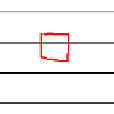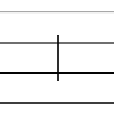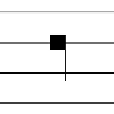Information Technology Reference
In-Depth Information
Figure 13. Screenshots of the pen-based classical musical score composition and editing system: on the
left the hand-drawn strokes and on the right the corresponding retranscribed document
pen-Based sYstems for musIc
composItIon and edItIng WIth
the presented approach
•
A pen-based graph editor, that allows to
draw geometrical shapes and to connect
them thanks to arcs; it also enables the user
to write text in the geometrical shapes; the
top of Figure 12 presents two screenshots of
this editing prototype, on the left the user
hand-drawn strokes, and on the right the
corresponding interpreted document.
Thanks to the methodology we present in this
chapter, we have already developed various pen-
based prototypes for the composition and the
editing of structured documents from different
domains:
•
A pen-based UML class diagram editor, that
makes it possible to draw classes, represented
as rectangles, and to connect them to model
associations; inheritance and aggregation
are among already available symbols; the
bottom of Figure 12 presents two screenshots
of this editing prototype.
•
Pen-based editors adapted to classical musi-
cal score notations, plainchant score nota-
tions, drum tablature notations and finally
stringed-instrument tablature notations. We
are going to present these systems more in
detail in this section.
Table 4. Interpretation rules for basic plainchant notations
Interpretation rules
Hand-drawn strokes
Re-transcribed symbols
Punctum
(Stroke s)
DCV:
Staff[in,all]s.
SCV:
.
SR:
GeometricalShapes , {Square}.
DCC: .
VerticalSeg
(Stroke s)
DCV:
Staff[in,all]s.
SCV:
.
SR:
GeometricalShapes , {VerticalSeg}.
DCC: .
Virga
(Punctum punctum , VerticalSeg vSeg)
DCV:
Staff→staff[in,all]punctum,
staff[in,all]vSeg.
SCV:
vSeg[topLeft]punctum.
SR:
.
DCC: .















Search WWH ::

Custom Search